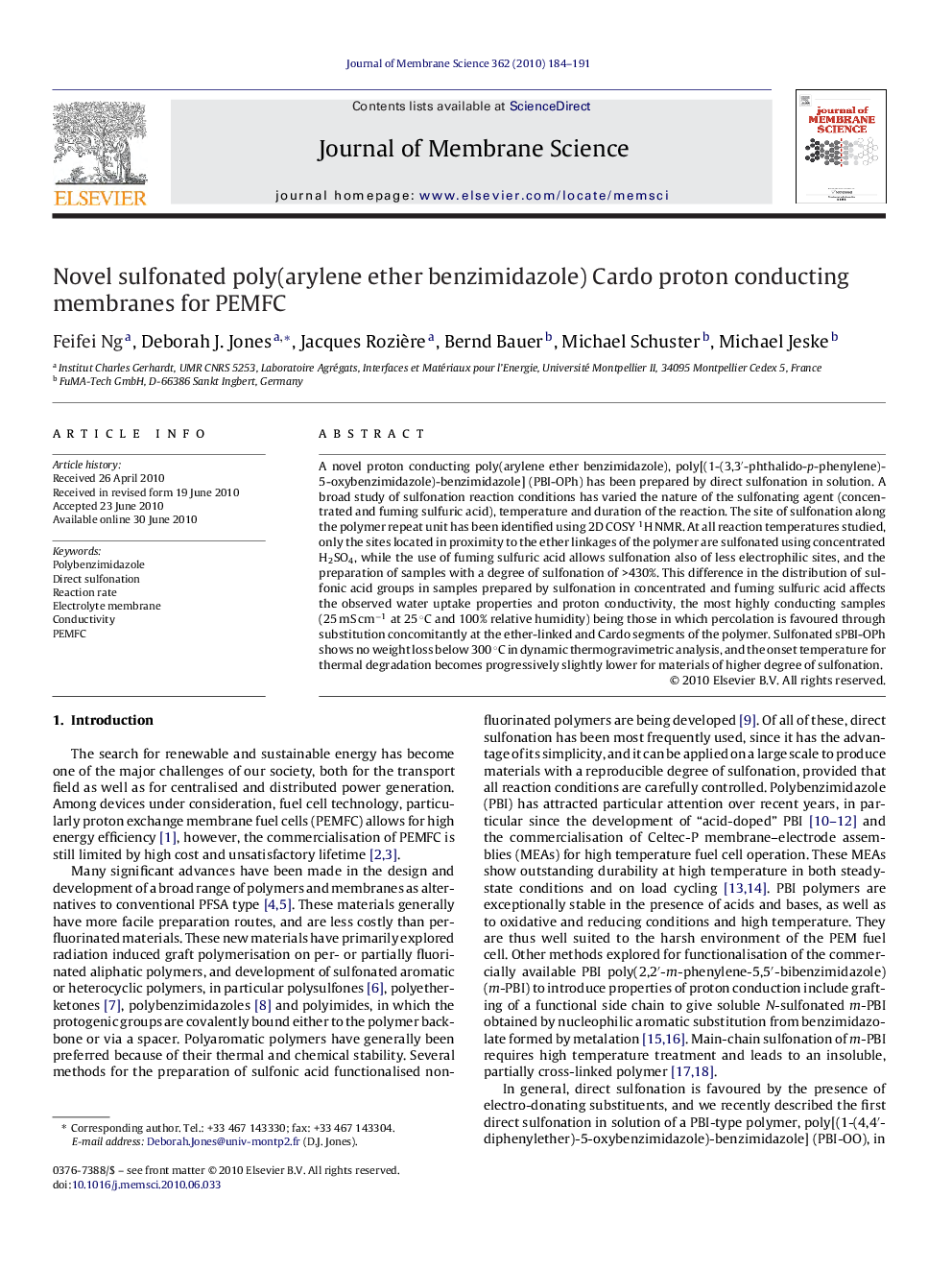| Article ID | Journal | Published Year | Pages | File Type |
|---|---|---|---|---|
| 636240 | Journal of Membrane Science | 2010 | 8 Pages |
Abstract
A novel proton conducting poly(arylene ether benzimidazole), poly[(1-(3,3â²-phthalido-p-phenylene)-5-oxybenzimidazole)-benzimidazole] (PBI-OPh) has been prepared by direct sulfonation in solution. A broad study of sulfonation reaction conditions has varied the nature of the sulfonating agent (concentrated and fuming sulfuric acid), temperature and duration of the reaction. The site of sulfonation along the polymer repeat unit has been identified using 2D COSY 1H NMR. At all reaction temperatures studied, only the sites located in proximity to the ether linkages of the polymer are sulfonated using concentrated H2SO4, while the use of fuming sulfuric acid allows sulfonation also of less electrophilic sites, and the preparation of samples with a degree of sulfonation of >430%. This difference in the distribution of sulfonic acid groups in samples prepared by sulfonation in concentrated and fuming sulfuric acid affects the observed water uptake properties and proton conductivity, the most highly conducting samples (25 mS cmâ1 at 25 °C and 100% relative humidity) being those in which percolation is favoured through substitution concomitantly at the ether-linked and Cardo segments of the polymer. Sulfonated sPBI-OPh shows no weight loss below 300 °C in dynamic thermogravimetric analysis, and the onset temperature for thermal degradation becomes progressively slightly lower for materials of higher degree of sulfonation.
Related Topics
Physical Sciences and Engineering
Chemical Engineering
Filtration and Separation
Authors
Feifei Ng, Deborah J. Jones, Jacques Rozière, Bernd Bauer, Michael Schuster, Michael Jeske,
